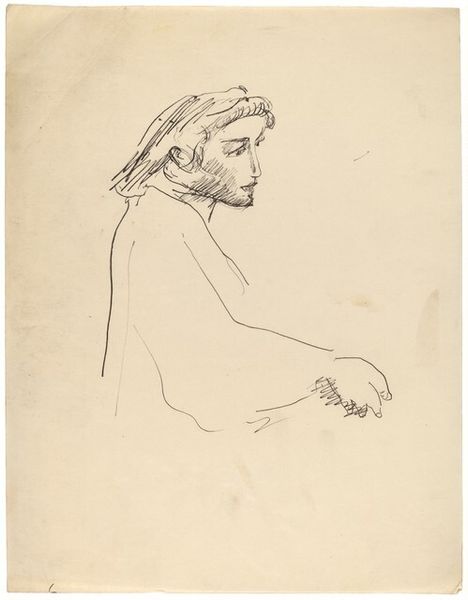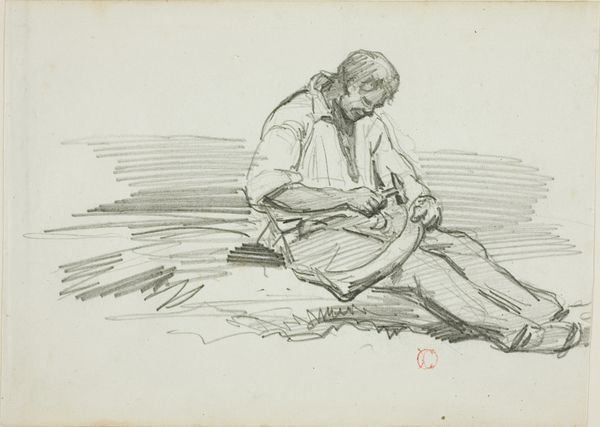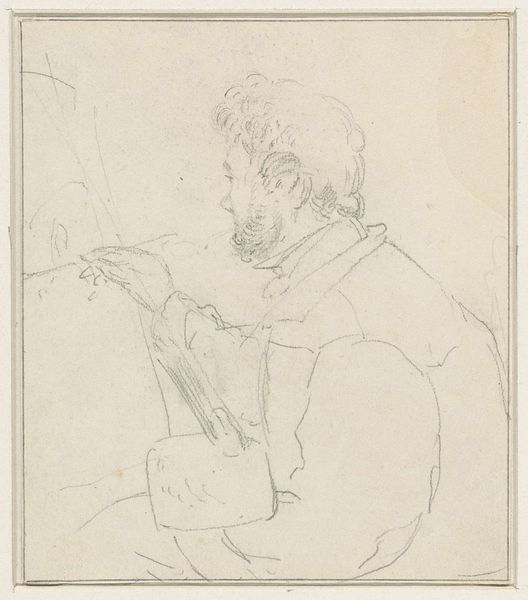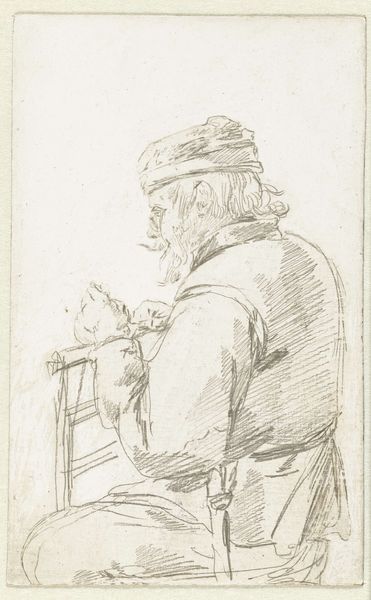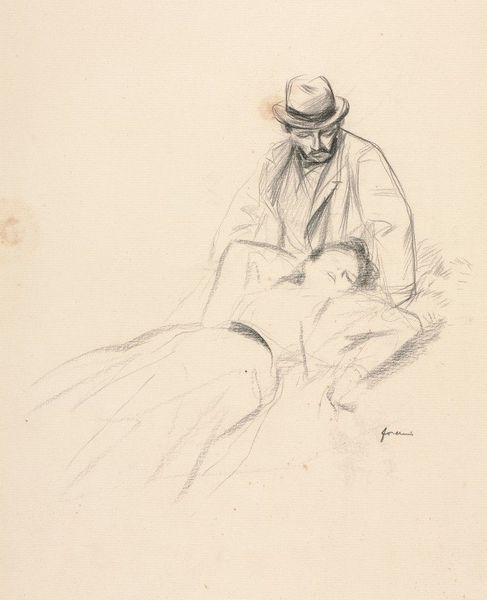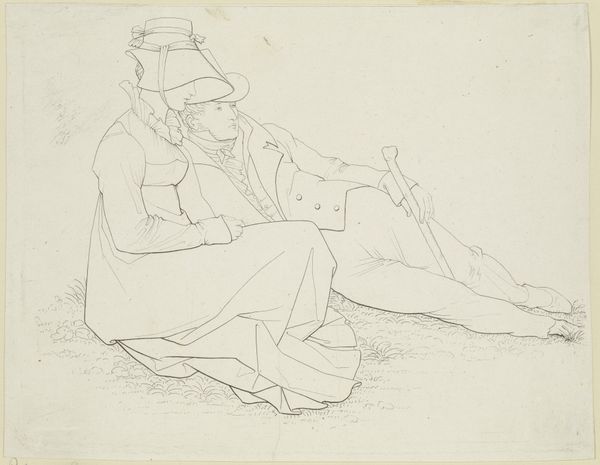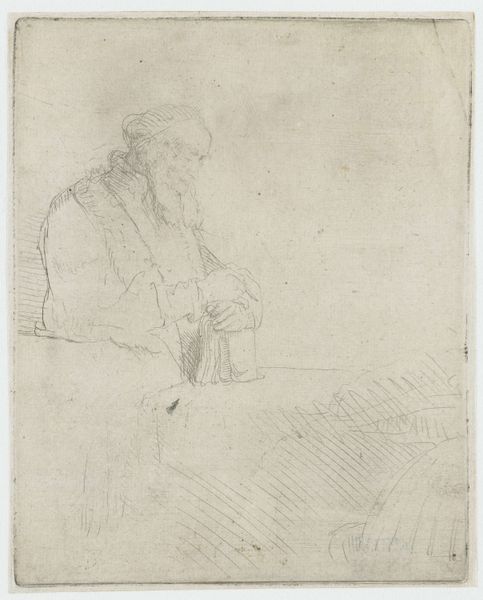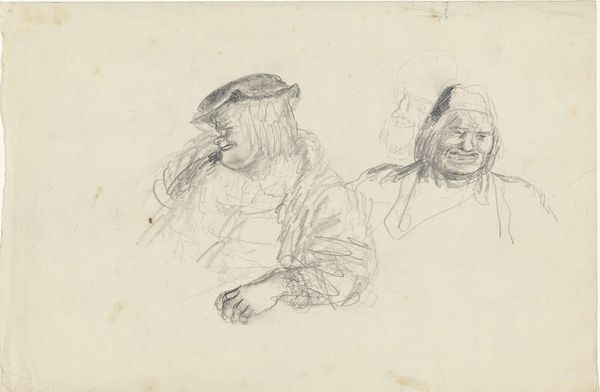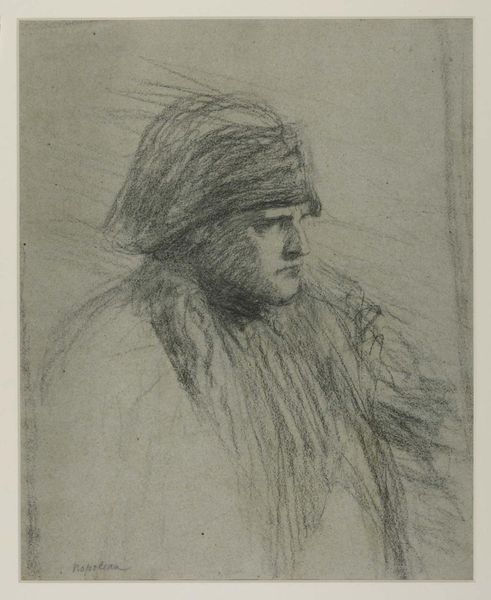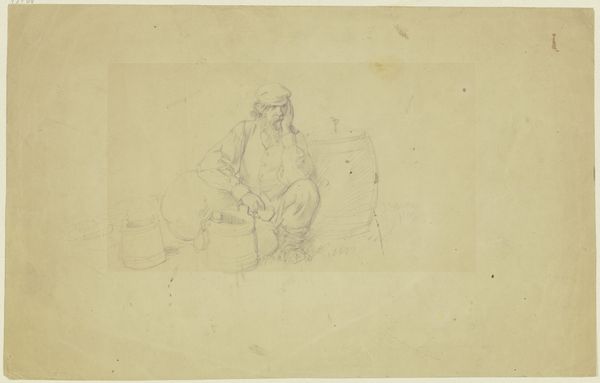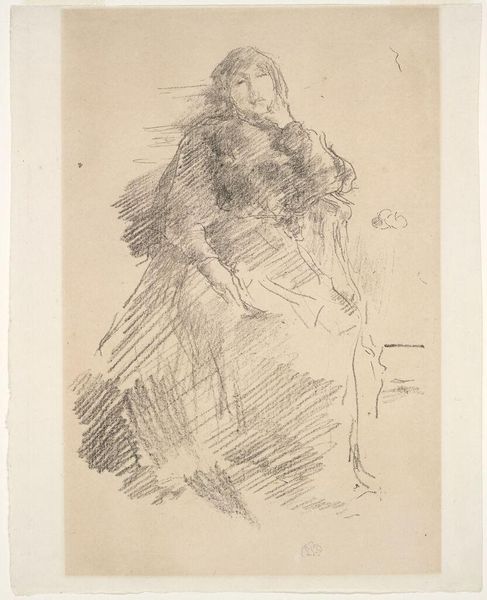
drawing, pencil
#
portrait
#
drawing
#
amateur sketch
#
light pencil work
#
pencil sketch
#
incomplete sketchy
#
landscape
#
figuration
#
personal sketchbook
#
idea generation sketch
#
sketchwork
#
character sketch
#
pencil
#
sketchbook drawing
#
realism
#
initial sketch
Dimensions: height 210 mm, width 257 mm
Copyright: Rijks Museum: Open Domain
Curator: This is "Man met baard zittend op een paard," or "Man with beard sitting on a horse," a pencil drawing by Henk Henriët, made around 1936-1940. Editor: My first impression is one of quiet contemplation. There's a raw, unfinished quality to it that adds to the intimacy. Curator: The sketchy quality, using light pencil work, does indeed suggest immediacy. Notice the composition: the subject is prominently positioned, yet unfinished details offer a glimpse into the artist's process of ideation. Editor: I am immediately struck by the lack of contextual clues. This forces us to consider what exactly the man's presence means, beyond his physical appearance. I find myself wondering about the period between the wars in Europe when the drawing was probably made. What stories does this subject conceal? Curator: That brings to mind the formal handling of line and form. The pencil strokes, are not just representational, but constructive. They model form with an elegant economy of means. He's using line, layering it, to establish mass and volume. Editor: Considering that history and Henriët's likely cultural positioning, could the sketch possibly reveal something of prevailing socio-political attitudes, especially when figurative art and idealized portrayals were popular? Curator: Perhaps, but also notice the surface treatment. It lacks refinement; it seems like a quick study done in a personal sketchbook. The cross-hatching is functional. The details that ARE rendered, like the figure’s clothing and clasped hands, receive considerable detail when compared to the horse that disappears into thin air. Editor: You are right! This is a figure both present and remote, framed perhaps as a moment of human resilience or escapism amidst uncertain historical winds. He may not be idealized, but is definitely ennobled with Henriët’s work! Curator: I appreciate your socio-historical approach that provides some insight beyond just his figure. Editor: And I am reminded how formal decisions within a drawing invite critical historical interpretation of form and message. Thanks!
Comments
No comments
Be the first to comment and join the conversation on the ultimate creative platform.


